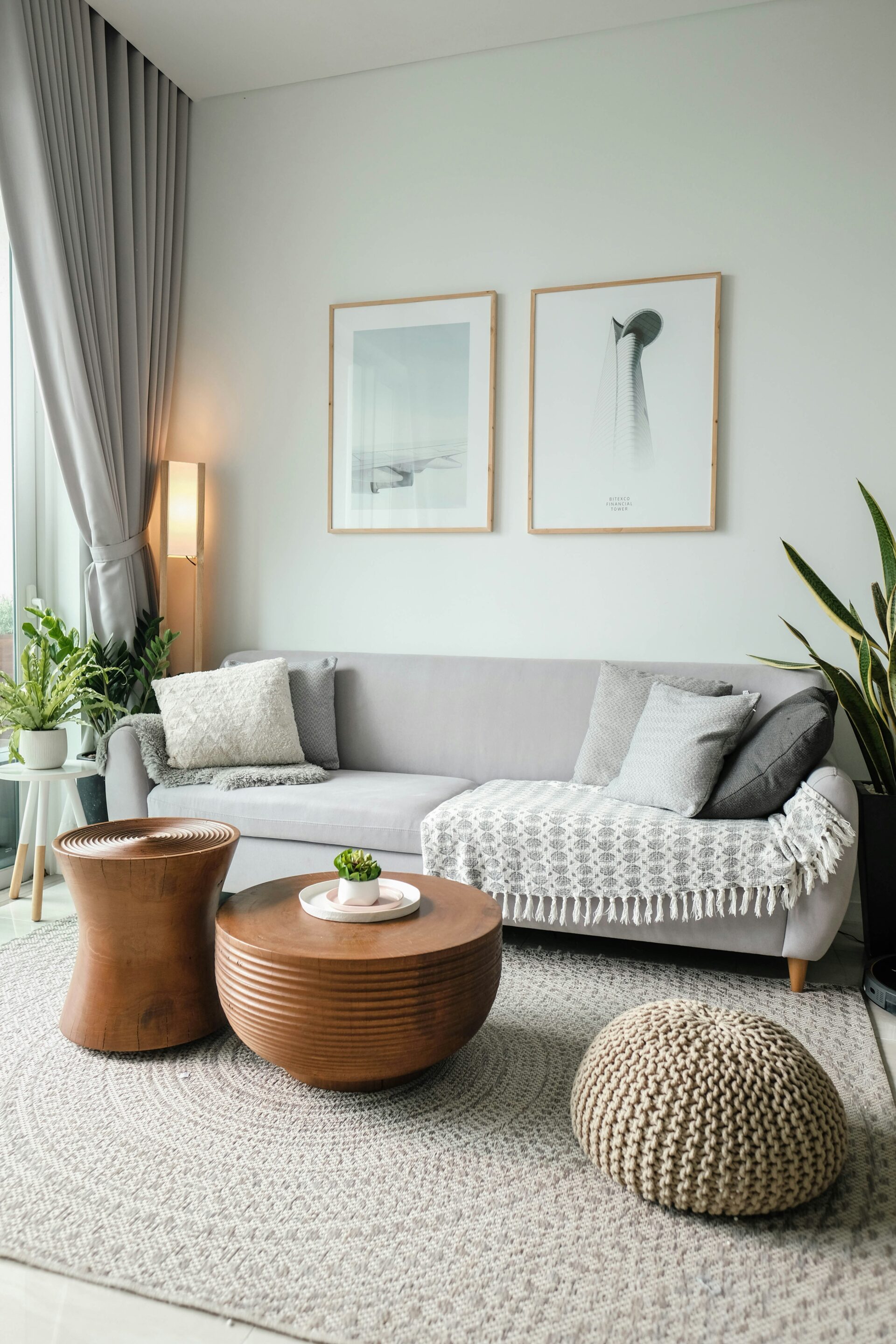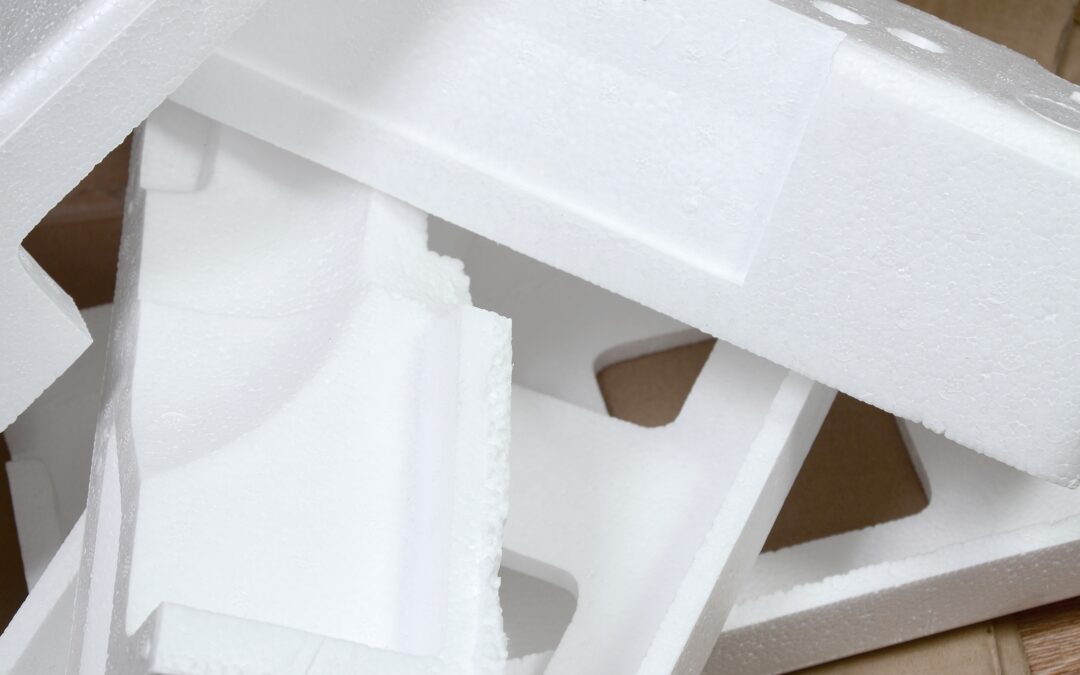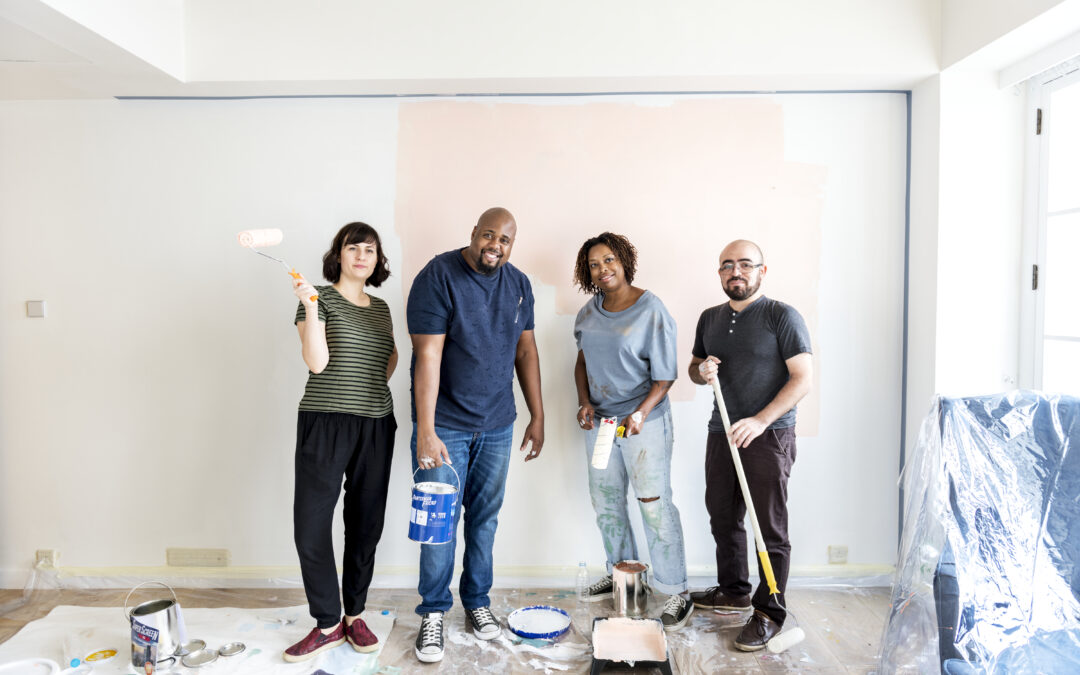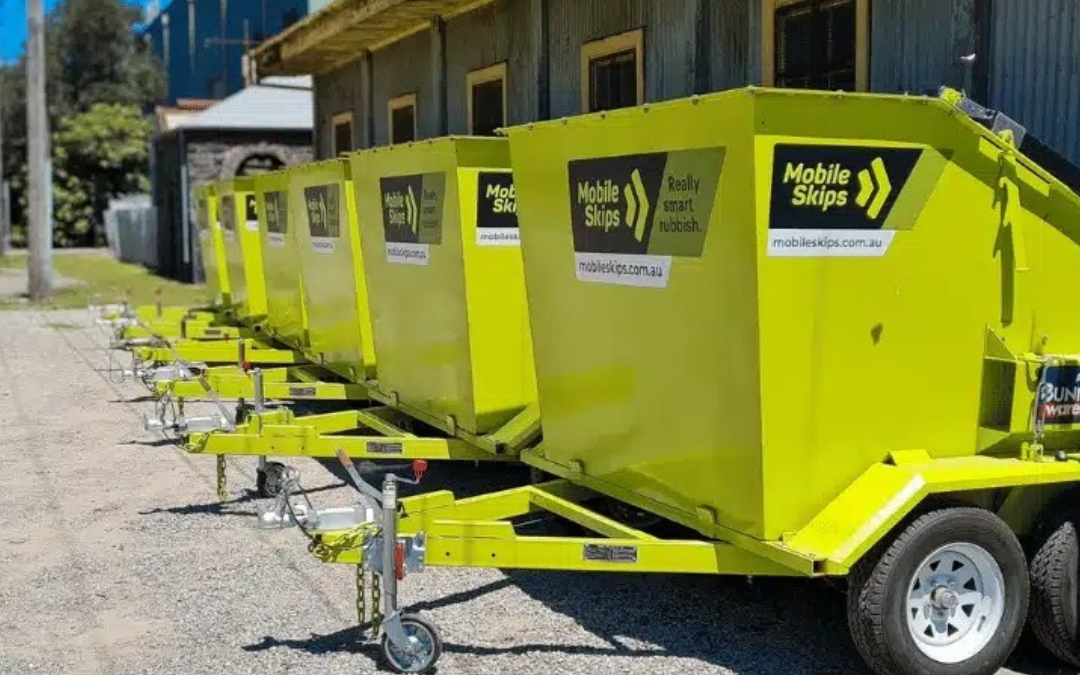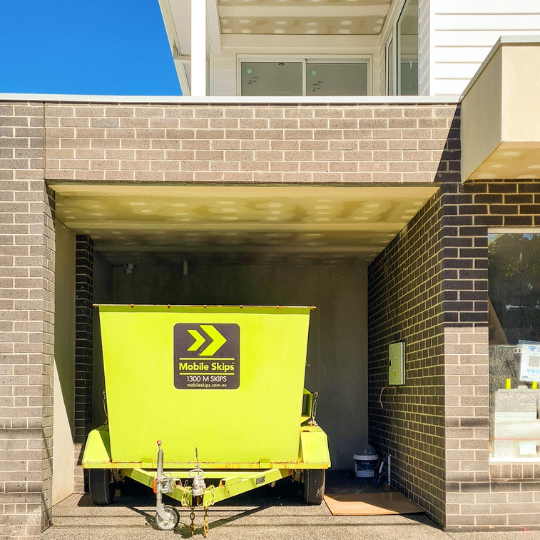Renovating with a Minimalist Approach
Thinking about giving your home a facelift using minimalist design? Picture sleek, uncluttered spaces that breathe simplicity and practicality. Let’s break down what minimalist architecture is all about and shine a light on some classic examples to get your creative juices flowing.
What Minimalist Architecture Is All About
Minimalism screams “less but better.” Forget about the frills. We’re talking clean lines, open rooms, and colors that don’t shout for attention. The aim? A calm, organized home where everything serves a purpose without overcomplicating things.
Here are the basics:
- Simplicity: Think straightforward designs without all the flashy details.
- Functionality: Every piece has a purpose and makes day-to-day living smoother.
- Efficiency: Clever use of every bit of space, no wasted corners.
- Natural Light: Big windows and open plans to flood your space with daylight.
- Quality Materials: Durable, natural stuff like wood and stone that ages well.
When you use these principles, your place won’t just look sharp, it’ll also be more livable. Stick to one or two colors, opt for natural touches, and keep things clutter-free to nail that minimalist vibe.
Classic Examples to Inspire You
Need some visuals? Check out these legends in minimalist design:
The Farnsworth House
Built back in 1951, Ludwig Mies van der Rohe’s Farnsworth House is the granddaddy of minimalism. With its boxy shape and huge windows, it almost invites the outside in, erasing the line between indoors and out. Simple yet stunning.
The Barcelona Pavilion
Even older, from 1929, is the Barcelona Pavilion also by Mies van der Rohe and Lilly Reich. This one’s all about clean geometry and rich materials like marble and onyx. It’s sleek and symmetrical, a true minimalist gem.
| Iconic Structures | Built | Key Highlights |
|---|---|---|
| Farnsworth House | 1951 | Boxy shape, huge windows, blends with nature |
| Barcelona Pavilion | 1929 | Clean lines, symmetry, luxury materials |
These landmarks show that minimalist design isn’t just a trend—it’s timeless. Bring elements from these designs into your home renovation and you’ll end up with a space that’s both beautiful and practical, embodying true minimalist living.
Small Space Hacks
Living in a small space and making it work for you takes some clever tricks. You don’t need sprawling rooms to have a spot for everything. Two major strategies to make the most of your space are hidden storage and multipurpose furniture. These tricks keep your home neat and useful without giving up style.
Hidden Storage Tricks
Hidden storage is your new best friend if you’ve got a small, minimalist spot. It lets you stash what you need without messing up the sleek look of your place. Here’s how to sneak in storage without anyone noticing:
- Entryway Niches: Turn those narrow entryways into space-saving heroes for coats and hats. Keeps the mess at bay (House Beautiful).
- Flush Doors: Hide storage behind doors that blend in with the walls. Great for small rooms like attic guest bedrooms, where extra stuff stays out of sight (House Beautiful).
- Under-Bed Storage: Use the space under your bed like a boss. Perfect for storing seasonal clothes and linens.
- Built-in Cabinets: Slip these into irregular walls to use every bit of space you got.
Multipurpose Furniture Tricks
Using furniture that does double duty is perfect for keeping your small space practical and neat. These pieces cut down on clutter without sacrificing comfort or style.
- Murphy Beds: Pop in a Murphy bed to turn a guest room into an office. When folded up, the bed gives you room to work or play.
- Built-in Bunks: Transform an old laundry room into a kids’ sleepover paradise with stacked bunk beds (House Beautiful).
- Custom Furniture: Get furniture made to fit your space perfectly. Think custom tables and banquette seating for those tricky spots (House Beautiful).
- Foldable and Wall-Mounted Desks: Foldable tables and wall-mounted desks give you workspaces that vanish when you’re done (Guardian Storage).
- Sofa Beds: In living rooms, use sofa beds for guests so you don’t need an extra bedroom.
These smart solutions help you keep a clean, minimal look without losing any functionality in your home. Mixing hidden storage and multipurpose furniture makes your space work harder for you.
Cool Examples of Hidden Storage and Multipurpose Furniture
| Hack | What It Does | Source |
|---|---|---|
| Entryway Niches | Stashes coats and hats out of the way | House Beautiful |
| Flush Doors | Hides storage in small guest rooms | House Beautiful |
| Murphy Beds | Doubles a guest room as an office | House Beautiful |
| Built-in Bunks | Makes bunk beds in repurposed rooms | House Beautiful |
| Custom Furniture | Tailors tables and banquettes to quirky spaces | House Beautiful |
| Foldable Tables/Wall Desks | Creates workspaces you can easily hide away | Guardian Storage |
With these hacks, you’ll keep your small place tidy and fit for whatever you need, all while looking stylish.
Simple Design Tips for Minimalism
Sprucing up your home with a minimalist twist? Let’s turn that clutter into clarity. Dive into these tips to bring light and custom flair to your space without breaking a sweat.
Let There Be Light
Bringing in light and bright elements opens up your pad, making it feel airy and welcoming. Stick with neutral shades—think whites, light greys, and soft pastels. They create a calm, uncluttered vibe.
Got a tiny living room? No worries. Small, light-coloured furniture does wonders. Greg and Liz Dutton suggest using petite chairs and low coffee tables to make your space look bigger and breezier. (Check the full scoop on House Beautiful).
Quick Light Tips:
- Paint your walls and pick furniture in light hues
- Add mirrors to bounce light and expand the room
- Choose low-profile furniture to keep your view clear
- Let natural light flood in by keeping windows unblocked
Furniture with a Personal Touch
Custom furniture can make your minimalist design pop with personality. Designer Chauncey Boothby swears by bespoke pieces to brighten and open up spaces. Imagine a perfectly crafted curved wood vanity—both functional and chic. (House Beautiful has more).
Got limited space? Go custom. Think Murphy beds and fold-out desks. Jennifer Jones suggests these smart designs for dual-purpose rooms. It’s all about making your space work harder for you. (Dive deeper on House Beautiful).
Custom Furniture Ideas:
- Built-in storage to keep clutter at bay
- Unique curved vanities and desks crafted for your space
- Murphy beds or fold-out desks for rooms that do double duty
- Modular pieces for flexible furniture arrangements
Blend light elements with custom furniture for a minimalist haven that’s both functional and fabulous. Keep these tips handy as you revamp your space. And remember to keep things clear, cozy, and oh-so-you.
Smart Tricks for Decluttering
Got too much stuff clogging up your place? Streamlining your space doesn’t just mean chucking things out—it’s about making wise choices in furniture and decorations too. Let’s dive into how you can get your home looking fab without the fuss.
Picking the Right Furniture
Nailing the furniture game is key to keeping chaos at bay. If your living room’s tight on space, go for furniture that fits just right without cramping your style. Design whizzes Greg and Liz Dutton got this down pat—they chose smaller, light-colored chairs and a short coffee table for their living room, making it feel roomier (House Beautiful).
Here’s how you can get it right:
- Size Matters: Opt for pieces that won’t gobble up your living space.
- Think Light: Light-colored furniture can trick the eye into feeling spaciousness.
- Stay Low: Low-to-the-ground pieces can make your ceilings seem higher.
Now, what’s even cooler? Multi-functional furniture. Sofa beds, foldable tables, and wall-mounted desks are lifesavers. They multitask like pros, letting you max out your space without maxing out the clutter (Guardian Storage).
| Furniture Type | Why It Rocks |
|---|---|
| Sofa Bed | It’s a couch… and a bed! |
| Foldable Table | Bye-bye table when it’s not needed |
| Wall-Mounted Desk | Workspace without the floor drama |
| Horizontal Murphy Bed | Turn that bedroom into a multi-use zone |
Going for Functional Decor
Pretty decor is cool, but pretty and useful? Now we’re talking. Functional decor doesn’t just look good; it earns its keep.
Here’s how to sprinkle some functional magic:
- Stylish Storage: Go for storage that’s easy on the eyes—think fancy baskets, sleek shelves, or fab built-ins.
- Double Duty Pieces: Ottomans that store stuff or provide extra seating—yes, please!
- Pegboards and Hooks: Hang your coats, bags, kitchen gizmos, and free up your counters and floors.
Take a page from designer Jennifer Jones. She turned a guest room into a home office by sneaking in a horizontal Murphy bed. Fold up the bed, and voila—the room’s ready for business (House Beautiful).
Remember, everything’s gotta pull double duty. When your decor is more than just eye candy, it keeps your space looking clean and feeling spacious. Now go and make that minimalist dream a reality!
Waste Management in Renovations: The No-BS Guide
Ready to tackle your home renovation? Let’s talk trash—literally. When it comes to sprucing up your space, waste management shouldn’t be an afterthought. Embrace a cleaner, greener approach with thoughtful material choices and smart disposal habits. Let’s dig in!
Smart Material Choices: Eco-Friendly and Stylish
DIY renovations are all about smart decisions, especially when it comes to materials. Ditch the usual suspects and pick options that shout sustainability. Here are some top picks:
| Material | Why It Rocks |
|---|---|
| Bamboo | Grows fast, renews quickly |
| Recycled Steel | Cuts down waste, tough as nails |
| Cork | Breaks down naturally, renews, insulates well |
| Reclaimed Wood | Saves trees, oozes character |
| Low-VOC Paints | Cleaner air, fewer nasty chemicals |
Go for stuff that’s recyclable, biodegradable, or with a tiny carbon footprint. Using reclaimed or upcycled goods not only slashes waste but injects a unique vibe into your home. And hey, energy-efficient appliances? They’re a must to chop down your energy bills.
Handling Your Renovation Junk: From Garbage to Gold
Trash isn’t glamorous, but kicking it responsibly is. Stick to the three R’s—Reduce, Reuse, Recycle—and you’re golden.
- Sort It Out: Split your waste into recyclables, biodegradables, and the nasty hazardous stuff.
- Give or Sell: Got decent furniture or appliances? Donate to your local charity or cash in on them.
- Recycle Right: Find local spots that take construction waste like metal, glass, and plastics.
- Deal With Hazards: Properly dump paints, batteries, and chemicals per local rules.
- Compost It: Wood shavings and plant bits make killer compost.
Stay on top of your waste game during the renovation, and you’ll be doing the planet a solid. Forbes points out that updating or tweaking existing buildings is a quick win for cutting carbon emissions right now and in the near future.
Hook up with responsible waste services and recycling centers to ensure your junk is dealt with the right way. It’s not just green talk—it makes your renovation cleaner and much safer. So, let’s get cracking on making your space fab with minimal trash drama!
Collaboration for Sustainability
Partnering with Vinnies
When you’re giving your home a minimalist makeover, sustainability should be high on the list. A fantastic partnership making headway in Melbourne involves Mobile Skips teaming up with the St Vincent de Paul Society (Vinnies). This effort aims to give household items a second life and helps those in need, creating a more earth-friendly way to tidy up.
When you book with Mobile Skips, snag a free Vinnies donation bag at checkout (Mobile Skips). Fill it up with items in good shape, and Vinnies will collect them and redistribute to folks who could really use them. It’s a win-win, keeping stuff out of the landfill and into homes where they can be loved again.
Vinnies accepts a variety of household goods as long as they’re in decent condition. The rule of thumb is pretty simple: if you’d happily pass it to a friend, Vinnies will take it (Mobile Skips). This straightforward approach makes donating less of a headache.
Encouraging Green Habits
Being eco-friendly is a big part of keeping your home sustainable and minimalist. The team-up between Mobile Skips and Vinnies shows how you can handle waste responsibly while also lending a hand to the community. When you opt into the donation program, your positive impact reaches way beyond your front door.
Here’s a quick look at what Vinnies commonly accepts:
| Item Category | Examples |
|---|---|
| Clothing | Shirts, pants, jackets |
| Kitchenware | Pots, pans, utensils |
| Small Electronics | Radios, microwaves |
| Furniture | Chairs, tables, small sofas |
| Books | Novels, textbooks |
This method means your decluttering not only helps the environment but also supports those who need it. By folding these green habits into your DIY projects, you stick to the core values of minimalism: purpose, simplicity, and sustainability.
Sharing these practices with your community can multiply the impact. Get your neighbours and friends involved, promoting responsible consumption and waste management. Together, we can turn the minimalist lifestyle into a driving force for a healthier planet.

